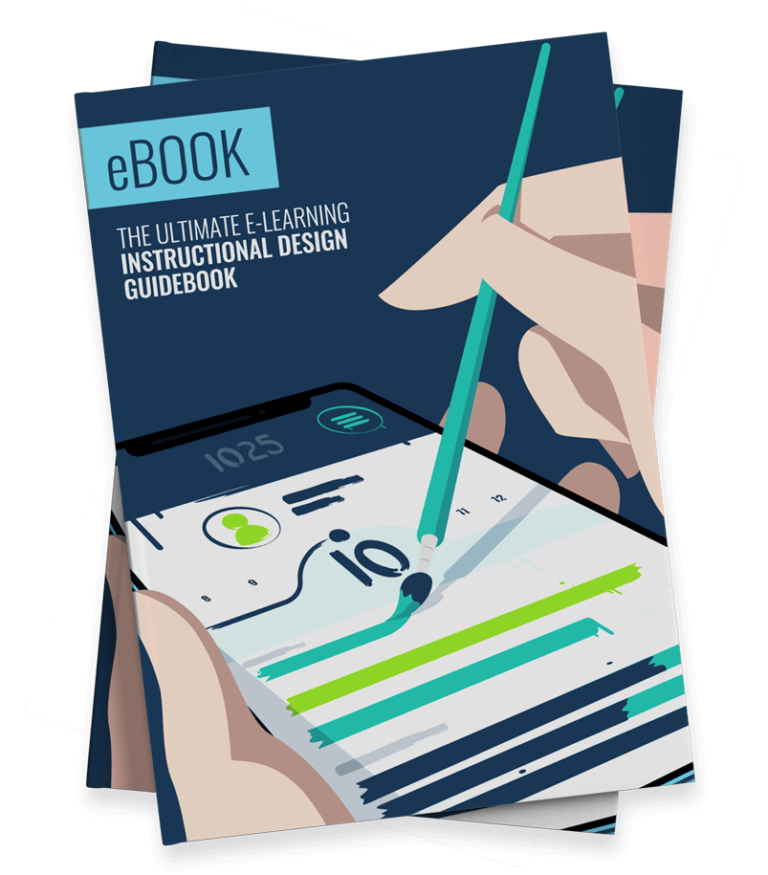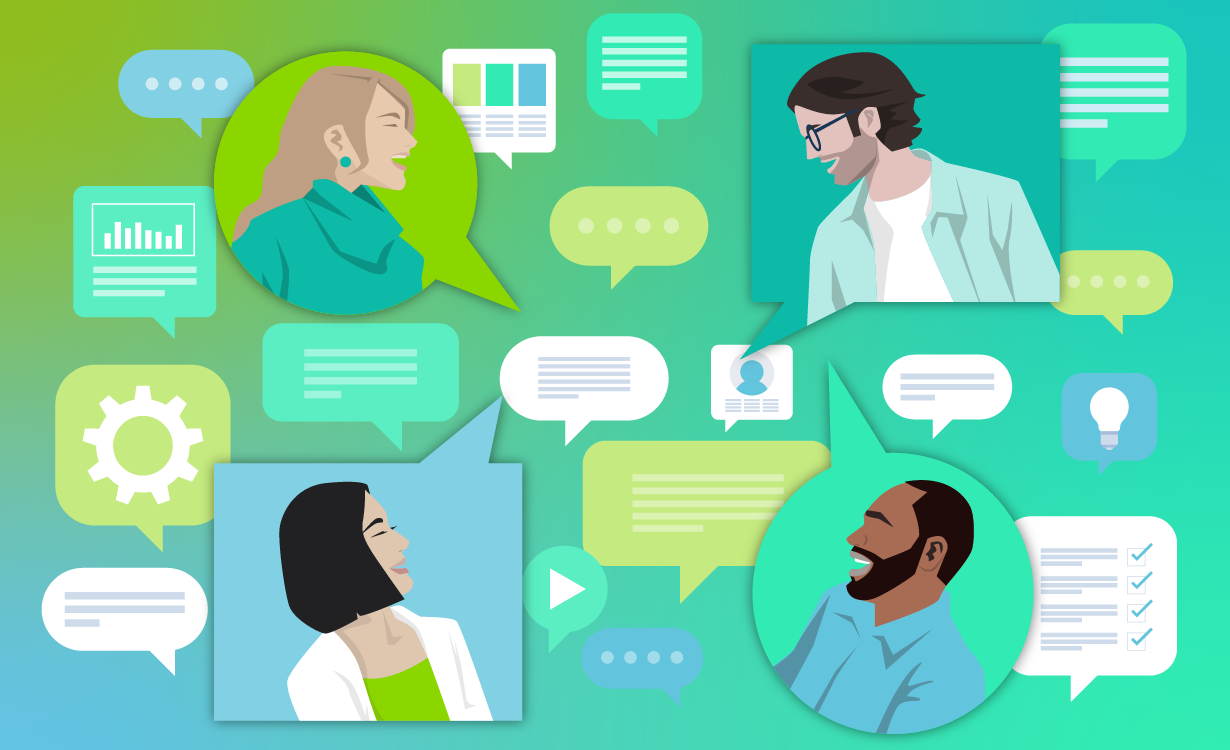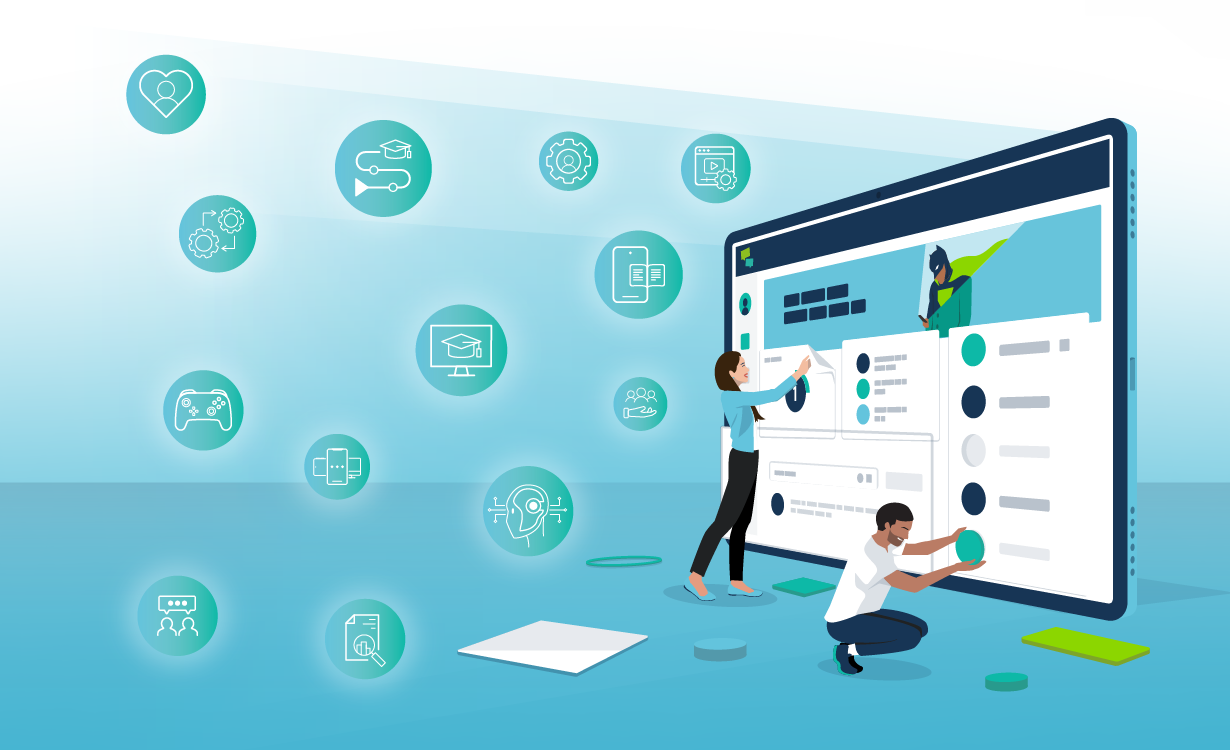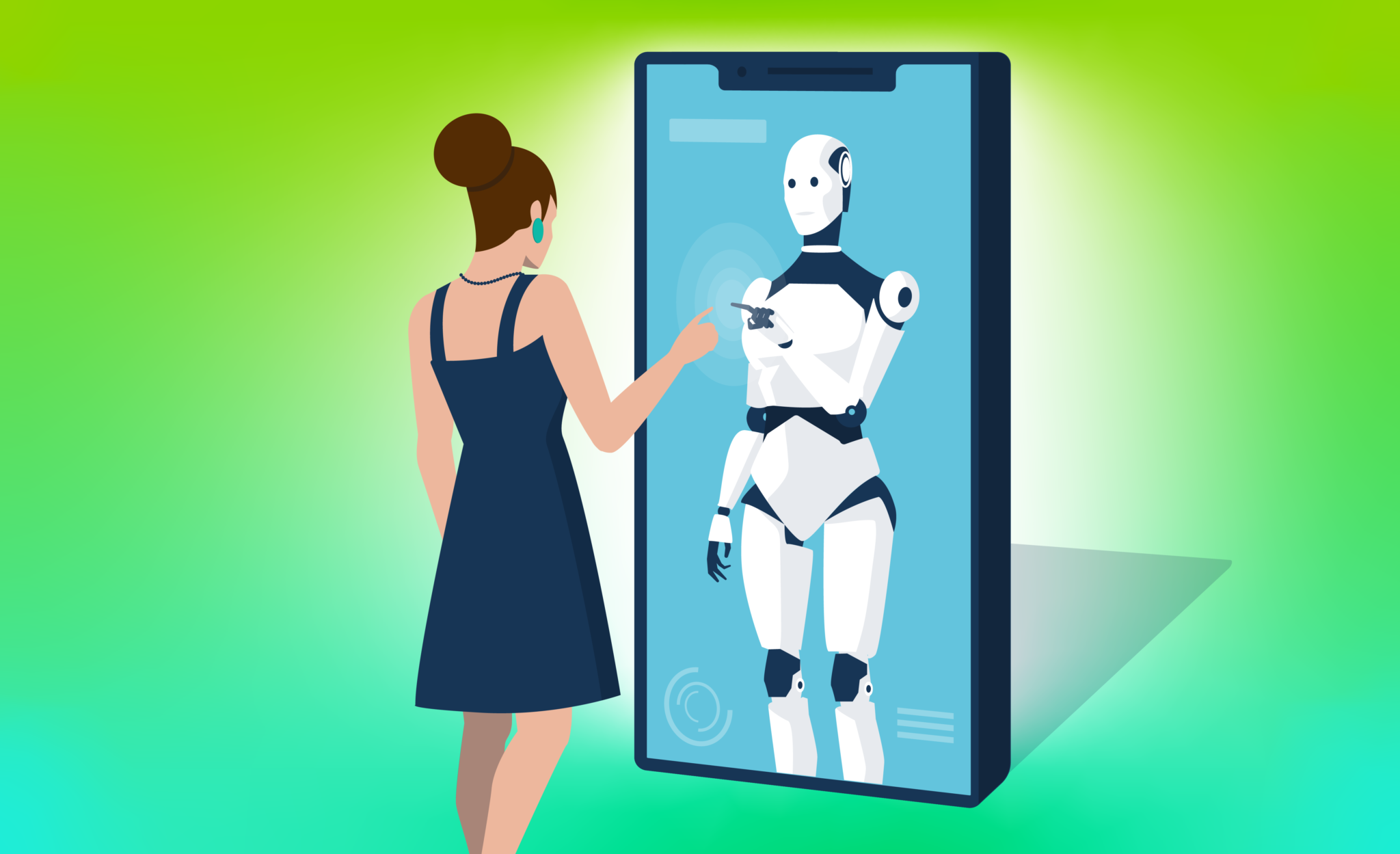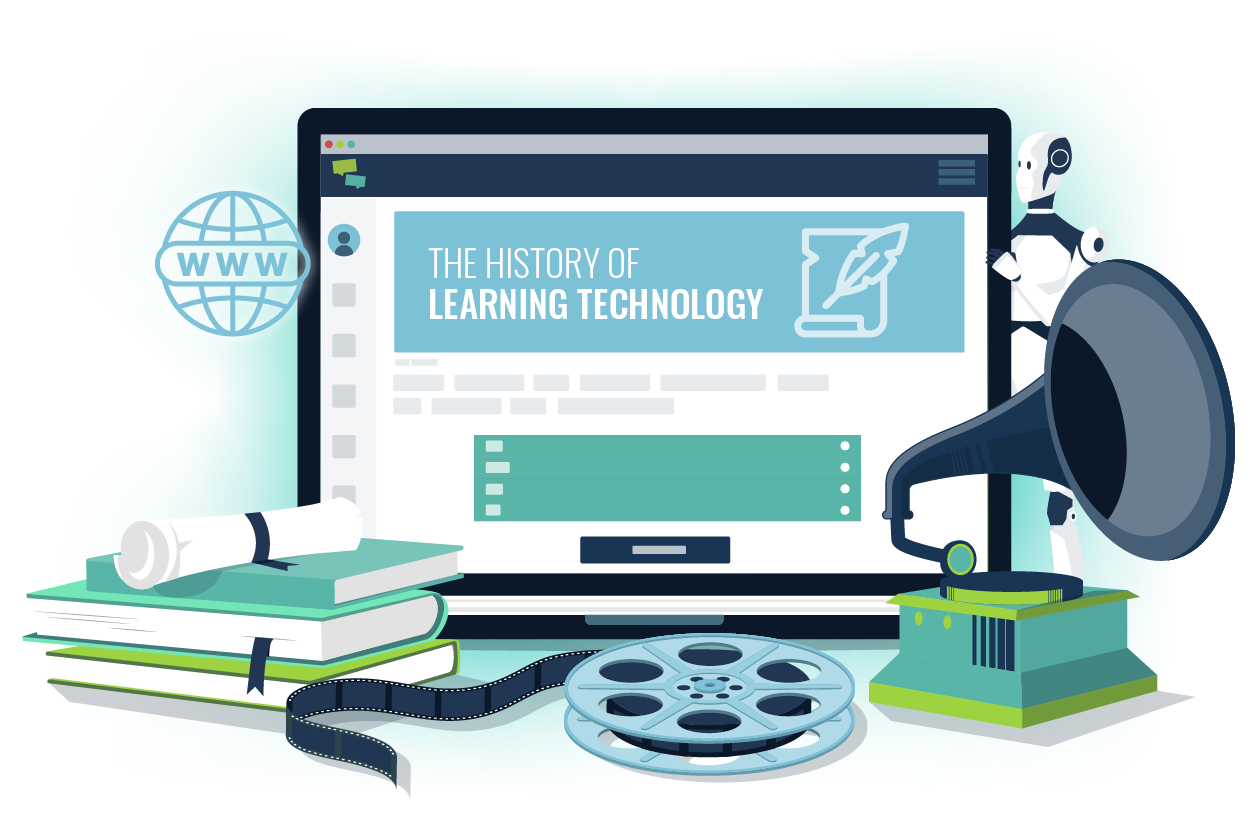
Learning technology has a rich history. Over the last century, we’ve witnessed remarkable steps forward, as we’ve moved from simple learning machines to today’s cutting edge AI-powered learning tools.
At Growth Engineering, we believe it’s essential to capture and document this extraordinary journey. As such, this article traces the evolution of learning technology in detail, forming a complete and compelling history.
Our story begins in 1440, with the invention of the printing press and continues up to modern day. Of course, there’s plenty of intrigue and unexpected turns in between. After all, this is a fast-paced field fuelled by innovation.
Ready to hop in our time machine and explore the history of learning technology? Then grab your boarding pass and let’s embark.
What is Learning Technology?
But first, let’s start with a definition.
Learning technology (aka. educational technology) is an umbrella term that covers a wide variety of tools and techniques used to enhance education. Specifically, it focuses on the application of technology to improve the effectiveness of learning experiences.
This includes the following areas, insofar as they relate to learning:
- Hardware: The specific devices used to deliver digital content, such as computers, tablets, and smartphones.
- Software: The educational software used to create, deliver, and manage learning materials. For example, learning management systems (LMSs) or learning experience platforms (LXPs).
- Networks: The technical solutions that enable connectivity and communication between learners and instructors. For instance, the internet.
- Approaches: The different ways technology can be integrated into teaching approaches. This includes blended learning, flipped classrooms, and eLearning courses.
As with other types of technology, learning tech has developed and matured over time. Tracing this evolution tells a fascinating and rewarding story. We’ve created a timeline of the key events in learning technology history, so you can see just how far we’ve come.
A Timeline of Key Dates in Learning Technology History:
A lot can happen in the space of a few hundred years. Refer to the key dates below for a glimpse into the past, and continue reading for the complete narrative.
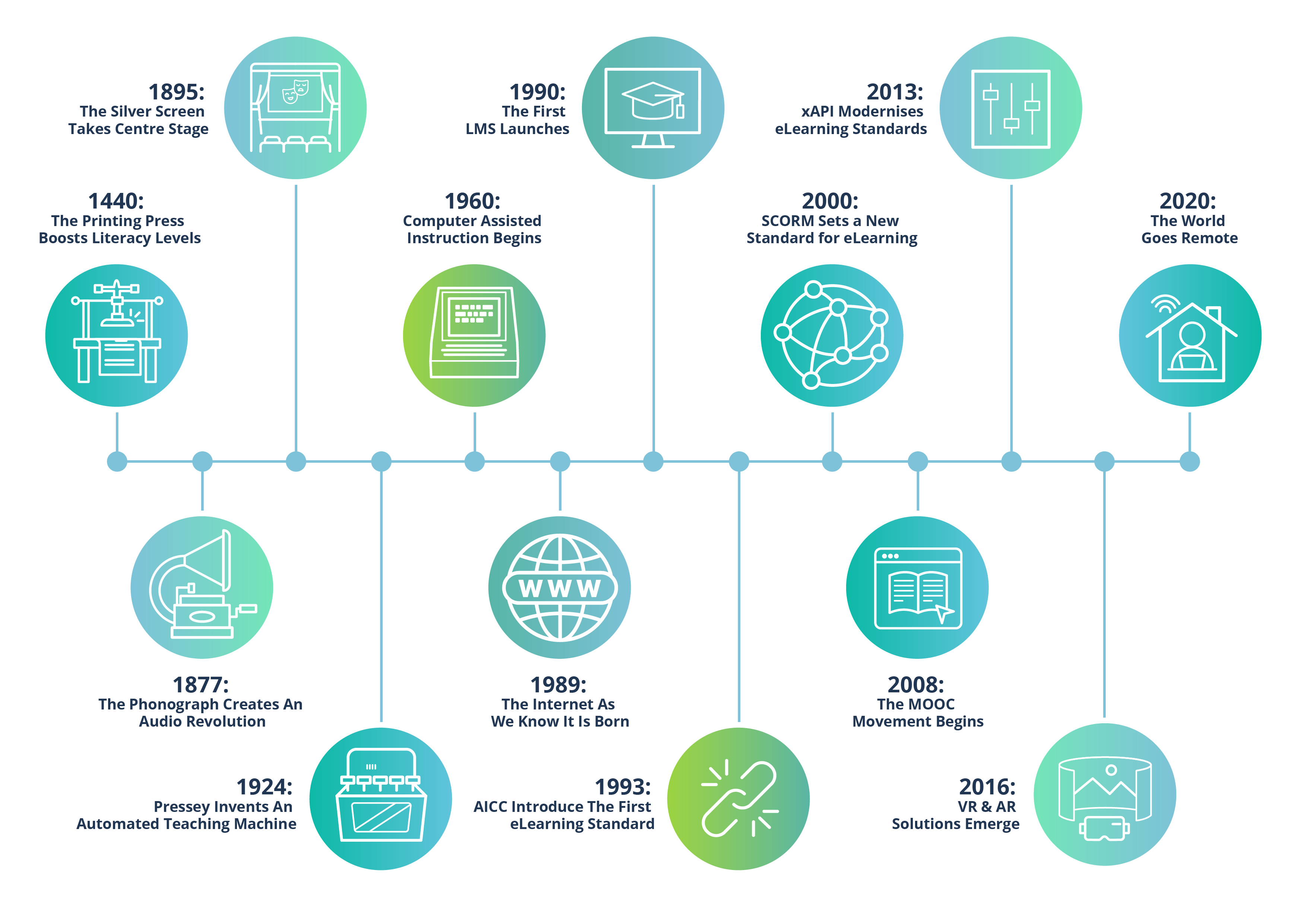

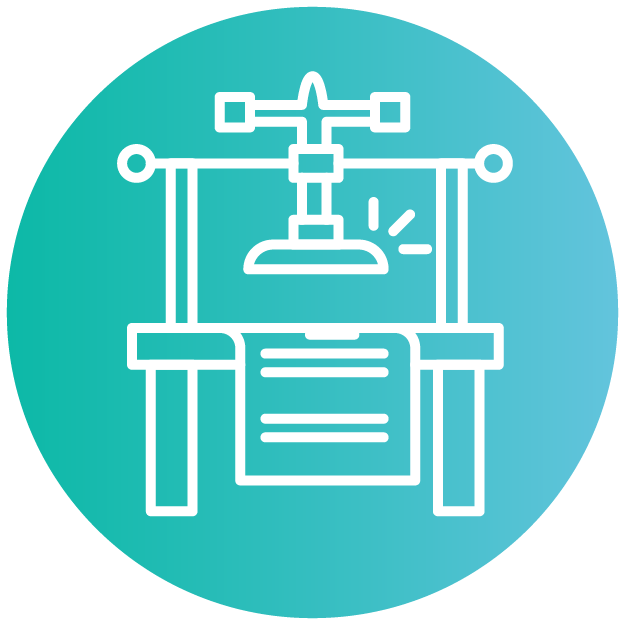
1440: Hot off the Press
We have a lot to thank Johannes Gutenberg for. After all, before he invented the printing press in 1440, the spread of knowledge was a painstaking endeavour. Books were meticulously copied by hand, making them scarce and costly treasures.
As such, the invention of the printing press represents a pivotal point in human history. By dramatically increasing the speed of book production, it made knowledge more accessible than ever before. As a result, literacy rates soared, and new educational opportunities blossomed.
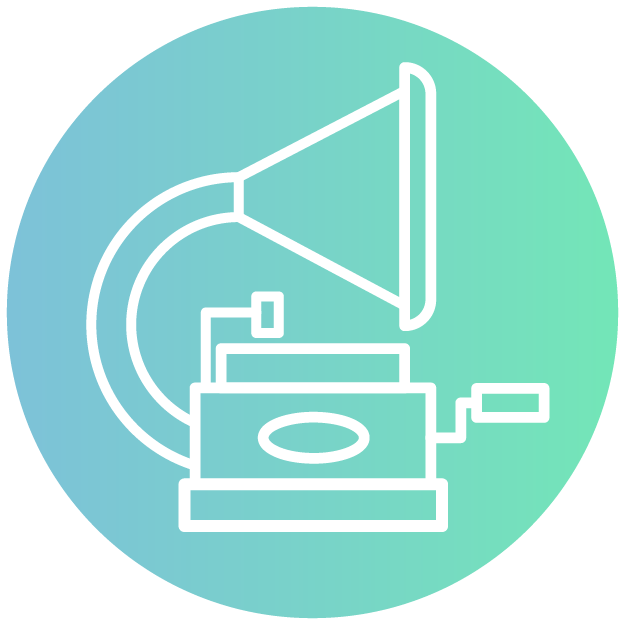
1877: The Sound of Success
Nearly half a millennium after Gutenberg’s groundbreaking invention, another technological marvel emerged: the phonograph. Thomas Edison’s 1877 invention revolutionised the way sound could be captured, stored, and reproduced.
Although early recordings were grainy and imperfect, the phonograph paved the way for future audio technologies, including record players and tape recorders. And as we know, these devices played a crucial role in the development of educational media.
That educational audiobook or podcast you love? You can thank the phonograph for making it possible.
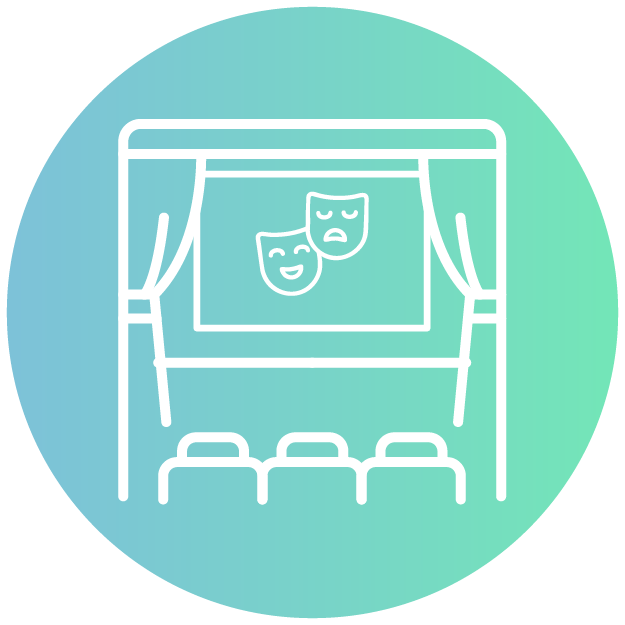
1895: The Magic of Moving Pictures
With our auditory senses engaged, you can guess where we’ll turn our attention to next.
The dawn of the 20th century brought with it the emergence of a powerful new medium: film. The Lumiére brothers patented the ‘Cinématographe’, the first commercially viable film projector in 1895.
This versatile device meant that for the first time moving images could be captured, developed, and projected on film. Before long, projection technology found its way into classrooms, opening up new visual learning opportunities.
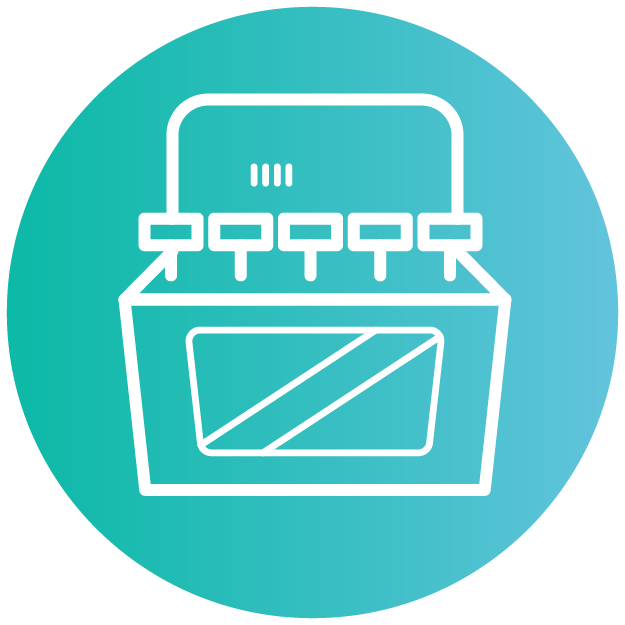
1924: The Birth of Automated Learning
In 1924, psychologist Sidney Pressey developed a pioneering mechanical teaching machine. Indeed, some have hailed this device as a precursor to the modern learning management system (LMS) and the first automated learning platform.
Pressey’s machine presented students with a series of multiple-choice questions. When an answer was selected, the machine would automatically display feedback. Whilst the device had its limitations, it was undeniably ahead of its time.
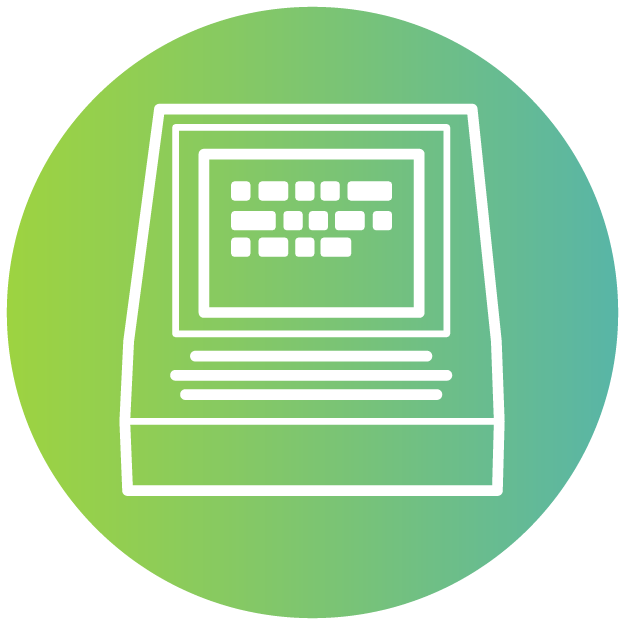
1940s: The Dawn of the Digital Age
The invention of the first electronic computers in the early 1940s was a true game changer. While these early machines were massive and cumbersome (nothing like the pocket-sized supercomputers we now carry around), they did successfully lay the foundation for our current digital revolution.
The Colossus computer, developed by British codebreakers in 1943, was one of the first electronic digital computers. It was soon followed by the ENIAC in 1945, the first general-purpose digital computer. These machines were big enough to fill an entire room.
As these early computers evolved, becoming smaller and more powerful, they paved the way for a new era of learning technology. This included computer-assisted instruction programmes (more on this shortly), educational software, and eventually, online learning.
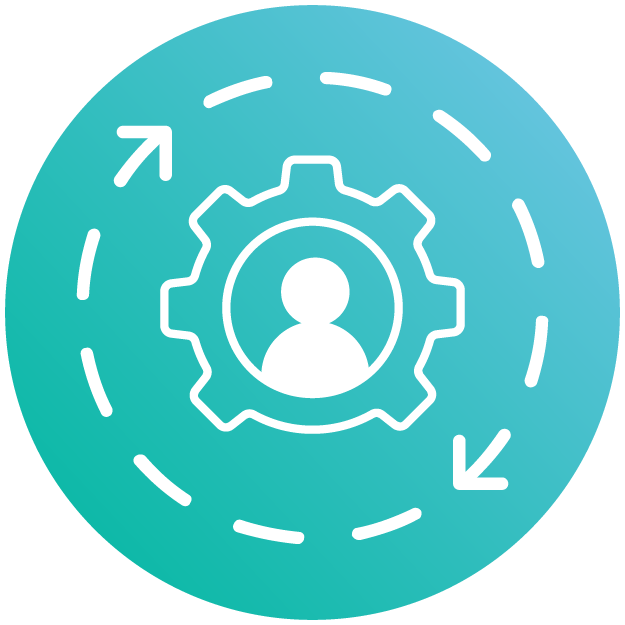
1960: Computers Start Teaching us a Lesson
As we’ve seen, the invention of the computer opened up new possibilities for education. Indeed, in 1960, the University of Illinois introduced PLATO. This system wasn’t named after Socrates and Aristotles’ philosophical friend. It’s actually an acronym that stands for: ‘Programmed Logic for Automatic Teaching Operations’.
PLATO can safely be considered the first computer-assisted instruction system. It used a time-sharing system to deliver personalised lessons to multiple users simultaneously. These lessons included text, graphics, and some early forms of audio and video.
Users could even connect and communicate with each other through the system, enabling social learning. Many of PLATO’s features have proven to be influential and it’s fair to say that it impacted the design of modern LMSs and online courses.
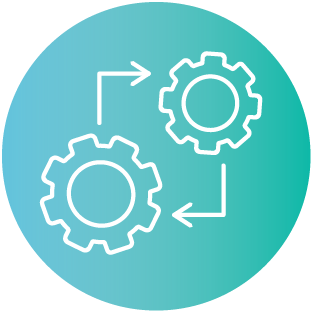
1967: Casting a Wider Net
In 1967, the US Department of Defence established the Advanced Research Projects Agency Network (ARPANET). This early packet-switched network was a precursor to the modern internet we know and love.
The ARPANET enabled the sharing of computer resources, such as software and data, among different individuals and institutions. As a result, it transformed the way we access information. We’ll expand on this shortly with the creation of the internet.

1970s: You Have Mail
The digital revolution gained some serious momentum in the 1970s. In fact, in 1971, a pivotal moment in digital communication occurred: the first email was sent using the ARPANET. As a result, a new, fast, efficient, and asynchronous communication method was born.
The momentum continued into 1973 with the first mobile phone call. While these early devices were bulky and expensive, they would eventually evolve into sleek smartphones capable of delivering powerful and engaging mobile learning experiences.
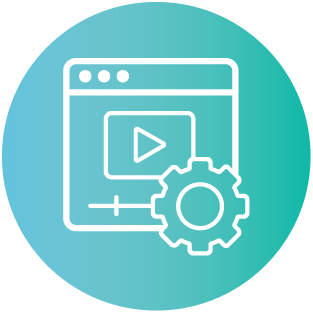
1980s: This Time it’s Personal
The rise of personal computers (PCs) during the 1980s marked a significant shift in technology and society. Before this decade, computers were often housed in climate-controlled rooms and operated by specialised technicians. Now, however, they became accessible to the masses.
In 1981, the IBM PC was released, alongside the first 3.5-inch floppy disk drive. A few years later, in 1984, the Apple Macintosh was released, setting a new standard for personal computing. This was followed by Microsoft’s release of Windows in 1985, an operating system that would go on to dominate the market.
These systems empowered learners, providing them with a new set of tools to explore, create, and learn at their own pace.

1989: Welcome to the Web
As the ARPANET grew, new protocols were needed to manage data transmission efficiently. This led to the creation of the Transmission Control Protocol/Internet Protocol (TCP/IP) in 1974 and the Domain Name System (DNS) in 1983.
In turn, this generated an explosion of activity, but there was still no standardised way to format documents on the network. That was until 1989, when British computer scientist Tim Berners-Lee proposed a solution: the World Wide Web. This system introduced hypertext to link documents together in a ‘web of information’.
This transformation turned the internet from a network primarily used by researchers into a global information space accessible to anybody with a connection. The stage was now set for the rise of online learning.
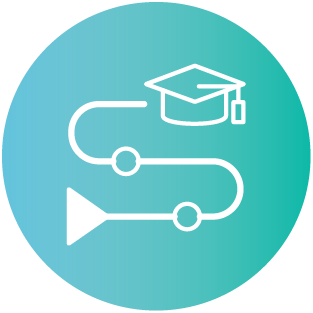
1989 Part Two: Charting a New Course
At a point in history where most people didn’t even have email, the University of Phoenix took a bold step. They launched the first online course in 1989. This innovative online MBA programme initially targeted users of an early online service called Prodigy.
For the first time, higher education was more accessible to working adults, single parents, and others with scheduling constraints. Now, online courses like these are commonplace. Indeed, according to Oxford College, 21% of British people use some form of online learning.
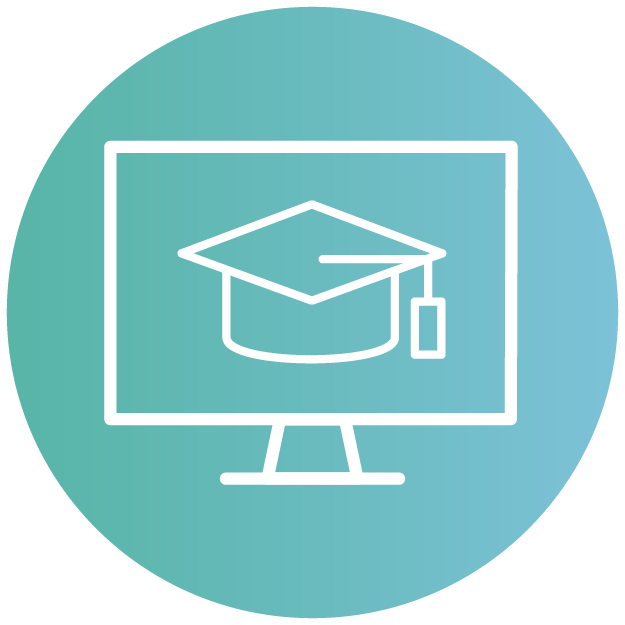
1990: All Learning Systems Are Go
Today, the learning management system (LMS) is considered the standard bearer for delivering online and blended learning experiences across a range of different contexts. But how did we get here?
The first commercially available LMS platform, ‘FirstClass’, was developed by SoftArc in 1990. While it was initially designed for communication and file sharing, it eventually embraced features like course management and assessment tools. Thus, the LMS was born.
EKKO, launched in 1991, refined the concept further. However, it wasn’t until the release of Blackboard LMS in 1997 that the technology truly gained widespread popularity, particularly in the higher education space.
Now, modern solutions like Growth Engineering LMS focus on driving learner engagement through gamification, social learning, and deep personalisation.
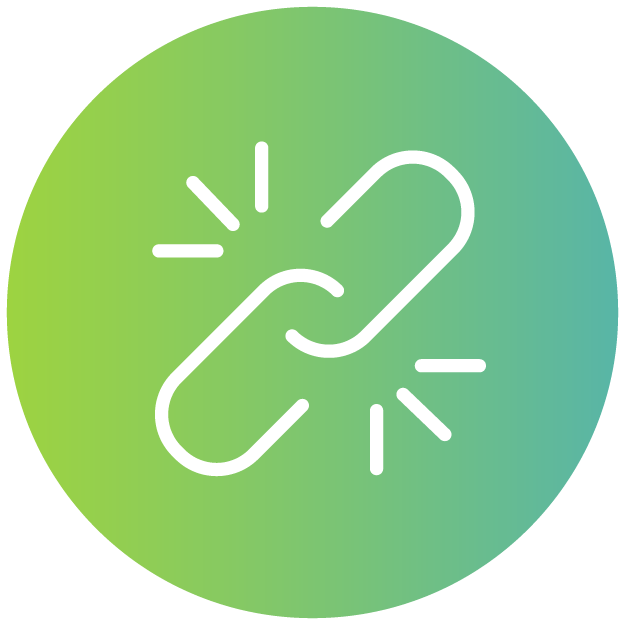
1993: The First Interoperability Standard Takes Flight
Formed in 1988, the Aviation Industry Computer-Based Training Committee (AICC) was an association of training professionals dedicated to developing guidelines for the creation and delivery of computer-based training in the aviation industry.
In 1993, the AICC published ‘CMI001 – AICC/CMI Guidelines for Interoperability’. This was the first runtime interoperability specification for learning management systems. It helped to standardise eLearning content, ensuring it would play nice across different systems.
By 1998, the AICC updated their specification to include a web-based interface called HACP. This expanded its reach beyond the aviation industry. While AICC has since been eclipsed by SCORM and xAPI (see below), its legacy continues, particularly in industries that prioritise security.
1999: The Name of the Game
While the term ‘eLearning’ may be ubiquitous today, it was only initially coined in 1999 by Elliott Masie at his TechLearn conference. He used it to describe the emerging field of electronic learning, driven by learning management systems, eLearning courses, and online classes.
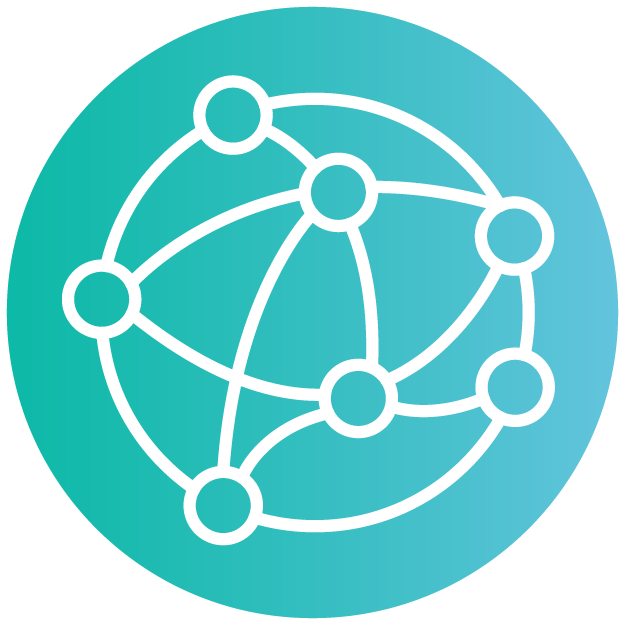
2000: SCORM Sets a New Standard
Like AICC, SCORM (or Sharable Content Object Reference Model) is a set of technical interoperability standards for eLearning content. It was developed by the Advanced Distributed Learning (ADL) Initiative, a US Department of Defence programme.
SCORM is the most widely adopted eLearning standard (by a sizeable margin). According to Software Advice, 62% of organisations use SCORM in their LMS. Here are the key versions you should be aware of:
- SCORM 1.0: The first version of the standard, released in January 2000.
- SCORM 1.2: The ‘industry workhorse’, released in October 2001.
- SCORM 2004 4th Edition: The most modern version of the standard, released in March 2009.
While SCORM has its limitations, its widespread adoption has driven the uptake of eLearning. After all, it has established itself as a ‘go to’ standard for interoperability, ensuring content reusability across various systems.
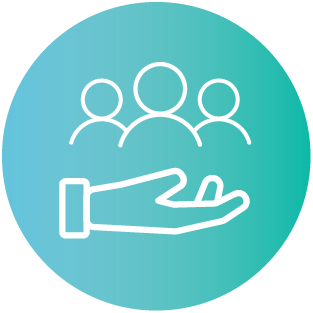
2002: Moodle Puts Learning Out in the Open
Although development began in 1999, the first version of Moodle (Modular Object-Oriented Dynamic Learning Environment) was released in August 2002. That made it the earliest open source LMS, meaning that its source code is freely available for modification and distribution.
The open source nature of the platform contributed to Moodle’s widespread adoption and customisation. Today, it’s one of the most popular LMS platforms globally, hosting 425+ million users and 48+ million courses (as of 2024).
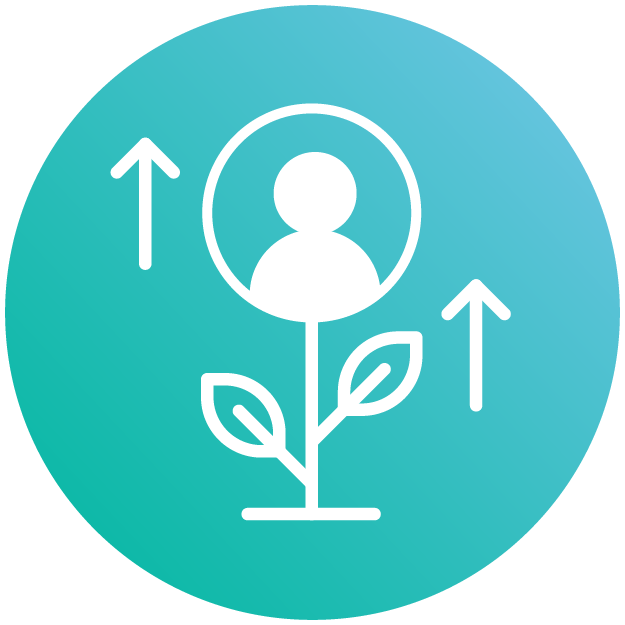
2004: A Star is Born
In 2004, something truly momentous happened. Growth Engineering was founded by Juliette Denny. Our organisation initially started as a consultancy firm focused on providing sales management training to new businesses.
However, over time, the focus shifted to developing innovative online learning solutions. This led to the launch of Growth Engineering LMS (2007), Growth Engineering Authoring Tool (2013), and Growth Engineering Learning App (2017).
Today, Growth Engineering is a B Corp Certified organisation known for its focus on learner engagement. We’ve won 120+ awards alongside our client partners and continue to push learning technology in new directions.
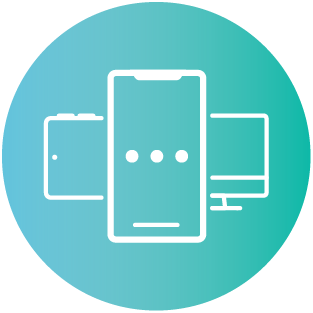
2007: The Year Phones Got Smart
While the IBM Simon, released in 1994, is widely considered the first smartphone, it was the introduction of the iPhone that truly transformed the mobile industry. Indeed, Steve Jobs’ iconic announcement in January 2007 marked the beginning of a new era of mobile learning.
After all, the smartphone has made it possible to learn anytime and anywhere. This process is supported by mobile learning apps which now offer a wide range of high-quality educational content. Learning on the go has never been easier.
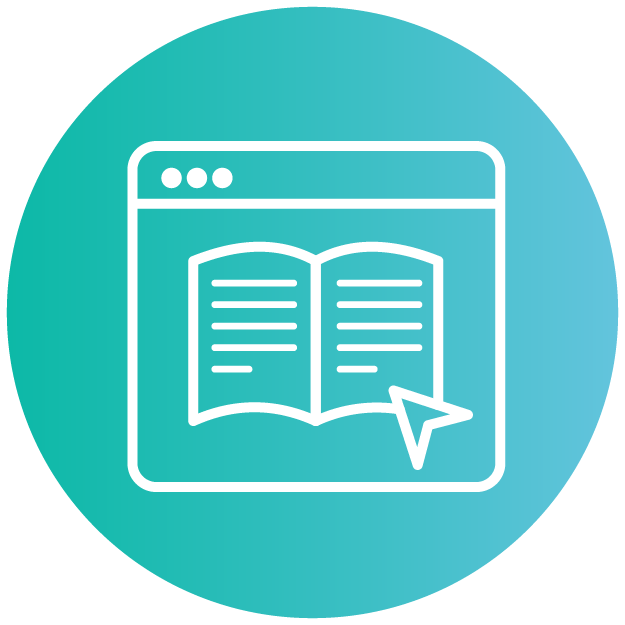
2008: MOOCs Run Amok
A MOOC, or a Massive Open Online Course, is a free online course that’s available to anybody with access to the internet. They’re designed for a mass audience, and use video lectures, resources, quizzes, and discussion forums to achieve their learning objectives.
The first MOOC is widely considered to be ‘Connectivism and Connective Knowledge’, created by George Siemens and Stephen Downes for the University of Manitoba in 2008. It attracted over 2,000 students from around the world.
This led to an explosion of different MOOCs in the early 2010s and the launch of popular platforms like Khan Academy (2008), Udacity (2011), Coursera (2012), and edX (2013).
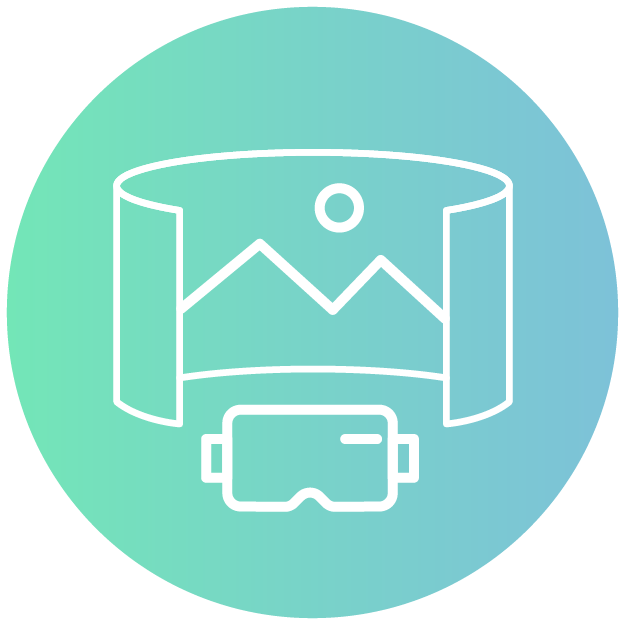
2012: Google Glass Looks into the Future
Back in 2012, after we survived the Mayan apocalypse, Google made a big announcement. They introduced Google Glass at their I/O conference. These smart glasses then shipped to consumers in May 2014.
They worked by projecting information onto a small display in front of the wearer’s eyes. While the initial hype didn’t last, this device did manage to spark real interest in wearable technology.
They also helped to make augmented reality educational experiences more accessible and affordable. After all, by overlaying digital information onto the real world, it was now possible to create immersive learning experiences.
As this technology has evolved, more innovative educational applications have emerged.
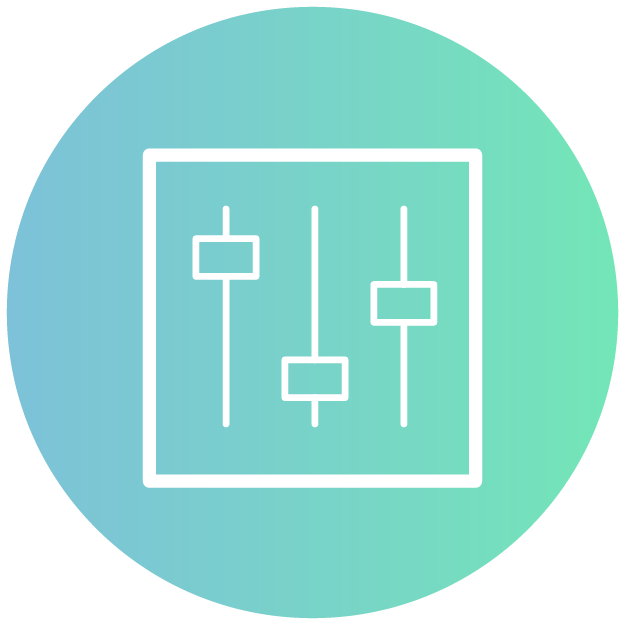
2013: A New X-Factor in Learning
As we’ve seen, SCORM remains the most popular eLearning interoperability standard. However, it’s not the most modern or flexible. That honour belongs to Experience API (more commonly known as xAPI).
In 2010, when SCORM was almost a decade old, the Advanced Distributed Learning (ADL) Initiative issued a call for research into the next generation of eLearning standards. This led to the launch of the community-driven Project Tin Can, spearheaded by Rustici Software.
Tin Can API version 1.0.0 was launched in April 2013. It was officially renamed Experience API later that same year. This modern standard can capture a wider range of learning activities than SCORM, including informal learning, simulations, and real-world experiences.
While xAPI has not reached the same level of adoption as SCORM (yet!), it continues to evolve and has the potential to significantly impact the future of learning technology.
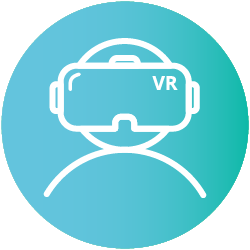
2016: A Virtual Reality Check
The concept of virtual reality (VR) has been around for decades. But it always felt like an abstract notion from science fiction. However, the release of consumer-friendly VR headsets like the Oculus Rift and HTC Vive in 2016 brought virtual reality to the mainstream.
These advancements sparked increased interest in VR for educational purposes. After all, in a virtual reality environment, students can explore, interact, and engage in hands-on experiences that might be impractical in traditional classrooms. This leads to deeper and more immersive learning experiences.
While VR technology has become more affordable, it has yet to achieve widespread adoption in education. As a result it is typically applied to niche or specialised learning experiences. We expect this will change over the coming years as virtual reality solutions continue to evolve.
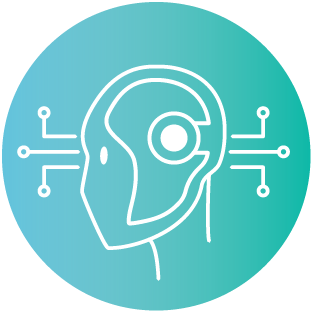
2019: The Rise of the Machines
Artificial intelligence (AI) has captivated our imaginations since the early 20th century. Just think of iconic portrayals such as Maria from Metropolis (1927), the Tin Man from The Wizard of Oz (1939), and The Terminator (1984).
However, it wasn’t until the late 2010s that significant advancements in natural language processing and machine learning started to influence the learning technology landscape. Indeed, the release of OpenAI’s GPT-2 in 2019 marked a turning point, as it demonstrated AI’s potential to generate human-quality text.
Soon, AI-powered features like personalised recommendations and automated feedback began to be integrated into learning systems. Of course, this was just the beginning. We’ll circle back to artificial intelligence shortly.
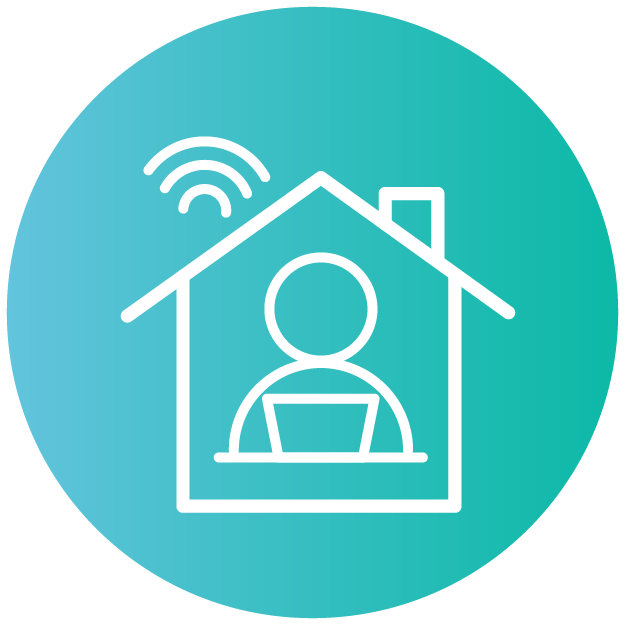
2020: The World Goes Remote
The COVID-19 pandemic and subsequent lockdowns of 2020 forced a rapid acceleration of digital transformation across all sectors. The education space was no exception. Indeed, as schools and universities closed their doors, educators had no choice but to adapt quickly and embrace remote learning.
As a result, online learning surged in popularity, and software like video conference tools and virtual reality classrooms were rapidly adopted. Even now, in our post-pandemic world, many of these technologies continue to play an important role in shaping learning experiences.
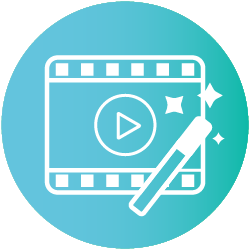
2023: GenAI Generates Excitement
In March 2023, OpenAI released GPT-4, a breakthrough learning model that significantly advanced the field of generative AI. As a result, McKinsey, New Scientist, and The University of Oxford all claimed that 2023 was the year that artificial intelligence went mainstream.
Generative AI is a type of artificial intelligence that can create various forms of content, such as text, images, audio, and even video. In the context of learning technology, GenAI can be used to create highly personalised learning experiences, produce learning materials, and provide intelligent coaching.
As a result, learning systems across the globe have been rapidly implementing AI features and touting their benefits. While we’re yet to see the full impact of this technology on education, it’s hard not to get excited about its potential.
Final Words
There we have it. This comprehensive timeline highlights the significant milestones in the history and evolution of learning technology. It’s inspiring to witness the remarkable progress that has been made over the past century.
During this time, we’ve progressed from rudimentary teaching machines to sophisticated automated learning systems. It’s fascinating to imagine what early pioneers like Sidney Pressey would make of today’s advanced learning technologies.
As we look to the future, we can’t help but wonder what possibilities lie ahead. How will more complex AI learning tools, improved data analytics, and our increasingly digital world shape the future of education?
We can’t wait to find out.
Thank you for reading. If you enjoyed this journey through the history of learning technology, you may also find our ‘Ultimate Instructional Design Guidebook’ enlightening. Download it now to embark on your next learning adventure.

